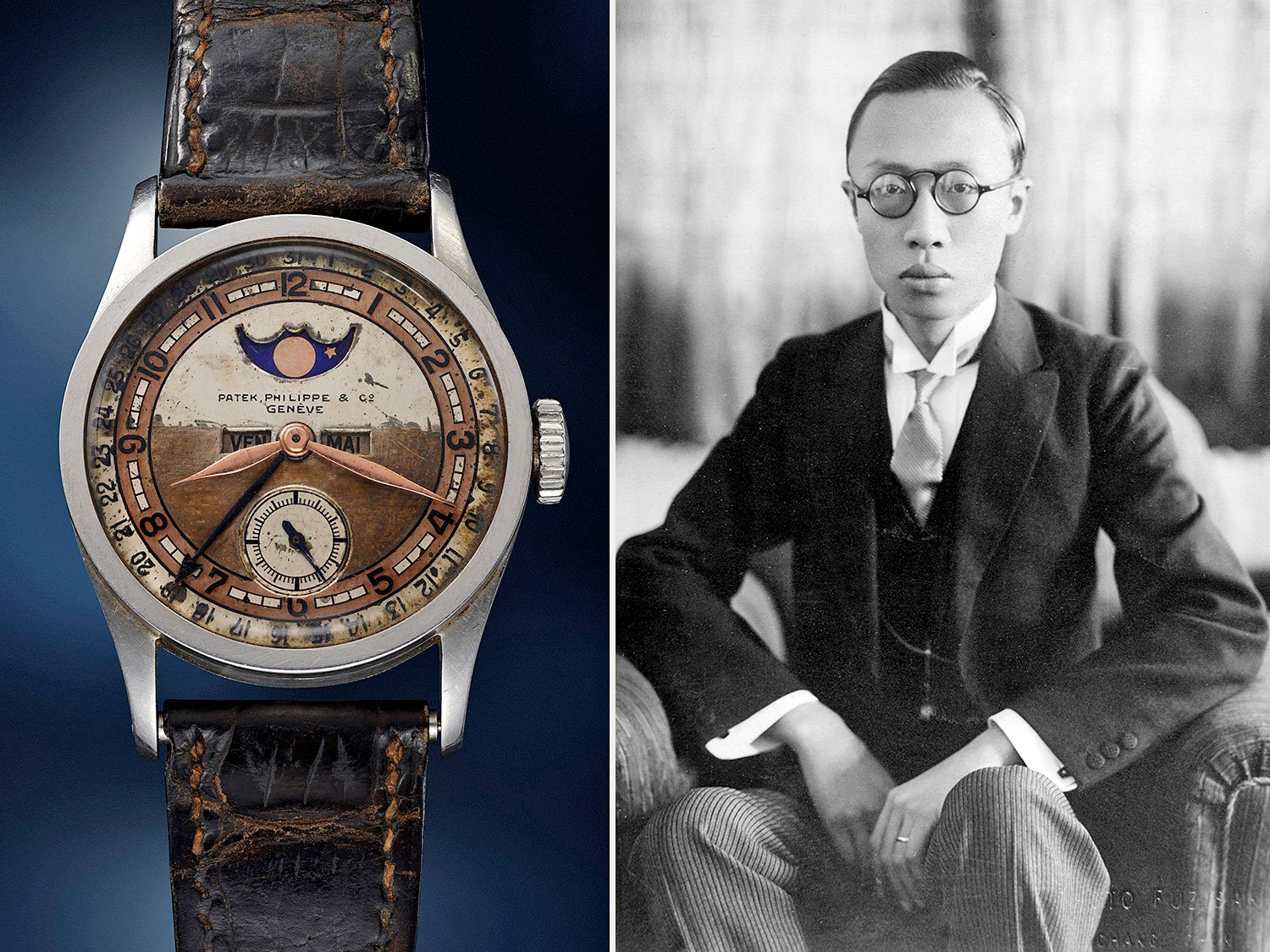
After much fanfare, Phillips netted $6.6 million in its Imperial Patek Philippe live sale in Hong Kong, the bulk of which derived from the star lot, a historic Patek Philippe reference 96 Quantieme Lune wristwatch that once belonged to Aisin-Gioro Puyi, the last emperor of the Qing dynasty in China.
The unique timepiece—which was thought to be lost until it resurfaced recently—sold for $6.2 million to an unidentified Asian collector based in Hong Kong. The buyer placed the winning bid on the phone after “six minutes of spirited bidding,” according to a Phillips spokesperson.
The watch was a feat of horological engineering when it was crafted by the Swiss watchmaker in 1937, packing an ébauche movement mechanism, moon-phase indicator, and triple-date calendar into a single ultra-thin “Roulette” configuration.
Conducted with Bacs & Russo, the Geneva-based auction house specializing in fine watches and jewelry, the evening sale took place at Phillips’s new Asian headquarters in Hong Kong’s West Kowloon Cultural District. According to a spokesperson, participating collectors hailed from 56 countries and ranged in age between 25 and 60.
Aisin-Gioro Puyi’s Patek Philippe and a watercolor painting by his brother-in-law, Gobulo Runqi. Copyright: Phillips/Jess Hoffman. Courtesy of Phillips.
Puyi’s remarkable life and times are dramatized in Bernardo Bertolucci’s The Last Emperor. The 1987 biopic was the first Western production allowed by the People’s Republic of China to film in Beijing’s Forbidden City, where Puyi ascended to the throne at the age of two. The Xinhai Revolution forced his abdication only four years later, in 1912.
Puyi was expelled from the Forbidden City in 1924. Ten years later, he was declared emperor of Manchukuo, a Japanese puppet state on mainland China. With the fall of Japan in 1945, Puyi was captured by the Soviets and imprisoned for five years before his extradition to China, where he was eventually allowed to re-enter Chinese society.
While it’s unclear how Puyi came to own the watch, its exceptional provenance as an emperor’s personal possession helped Phillips set three records at the sale: the highest amount paid for a Patek Philippe reference 96, the highest amount paid for any wristwatch previously owned by an emperor, and the most valuable of any lot sold by Phillips Watches in Asia.
Installation view of Puyi’s red paper fan (left) and his notebook with Confucius’s Analects prior to the sale in Hong Kong. Courtesy of Phillips.
“We have also witnessed many collectors from different collecting categories such as Chinese paintings, ceramics, and antiques who are new to Phillips vying for works offered in today’s sale,” said Thomas Perazzi, Phillips’s Head of Watches for Asia. “I am thrilled with this groundbreaking sale for the international collecting community.”
The sale also yielded exceptional results for other artifacts belonging to Puyi during his five-year detainment in a Russian prison. The notebook he kept, along with a leather-bound edition of Confucius’s Analects, sold for nearly $122,000, almost five times its presale estimate. In addition, a red paper fan that he inscribed and gifted to the Russian interpreter who assisted him sold for $77,846, six times its presale estimate.